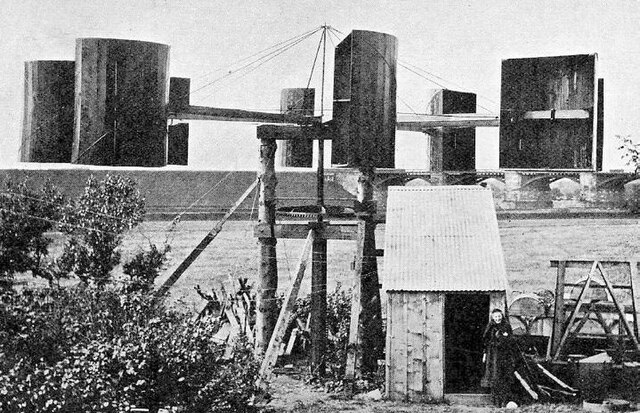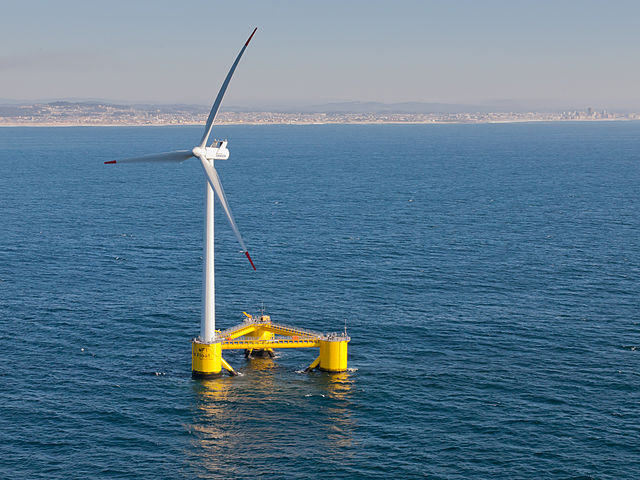A wind turbine is a device that converts the kinetic energy of wind into electrical energy. As of 2020, hundreds of thousands of large turbines, in installations known as wind farms, were generating over 650 gigawatts of power, with 60 GW added each year. Wind turbines are an increasingly important source of intermittent renewable energy, and are used in many countries to lower energy costs and reduce reliance on fossil fuels. One study claimed that, as of 2009, wind had the "lowest relative greenhouse gas emissions, the least water consumption demands and the most favorable social impacts" compared to photovoltaic, hydro, geothermal, coal and gas energy sources.
Thorntonbank Wind Farm, using 5 MW turbines REpower 5M in the North Sea off the coast of Belgium
Nashtifan wind turbines in Sistan, Iran
Illustration of the wind turbine for power generation erected by Josef Friedlaender at the International Electrical Exhibition in Vienna in 1883
James Blyth's electricity-generating wind turbine, photographed in 1891
Wind power is the use of wind energy to generate useful work. Historically, wind power was used by sails, windmills and windpumps, but today it is mostly used to generate electricity. This article deals only with wind power for electricity generation.
Today, wind power is generated almost completely with wind turbines, generally grouped into wind farms and connected to the electrical grid.
Wind farm in Xinjiang, China
The world's second full-scale floating wind turbine (and first to be installed without the use of heavy-lift vessels), WindFloat, operating at rated capacity (2 MW) approximately 5 km offshore of Póvoa de Varzim, Portugal
Roscoe Wind Farm: an onshore wind farm in West Texas near Roscoe
A turbine blade convoy passing through Edenfield in the U.K. (2008). Even longer 2-piece blades are now manufactured, and then assembled on-site to reduce difficulties in transportation.








